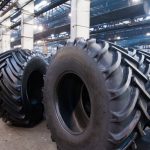Magnetostrictive Sensors in High Stake Environments
In specific high-stakes environments, such as manufacturing, where there are high operating temperatures, magnetostrictive linear position sensors play an essential role in factory automation. They are cost-effective and simple to install, making them ideal for many industrial applications.
What Are Magnetostrictive Linear Position Sensors?
Magnetostriction is a property of ferromagnetic materials that causes them to expand or contract in response to a magnetic field. This allows materials to convert electromagnetic energy into mechanical energy. When a magnetic field is applied to the material, its dipoles and field boundaries rotate to align with the magnetic field, causing an increase in magnetostrictive strain (force) on the material. Magnetostrictive linear position sensors measure the straight line displacement between a position magnet (typically, a permanent ring magnet) and the sensing rod. The position magnet and sensing rod do not touch, which prevents sensors from wearing down. They can also still operate even if there’s a barrier between the magnet and sensing rod (including any non-magnetic materials). Additionally, multiple magnetostrictive linear position sensors can measure numerous positions with only one sensing rod.Applications of Magnetostrictive Linear Position Sensors
Magnetostrictive linear position sensors are durable, extremely precise, and compact, which makes them ideal for wide-ranging applications and industries. According to mts sensors, industrial applications include:- Automotives: Production machinery, on-board suspension, transmission, and steering
- Chip & Wafer Handling: Precision measurements
- Food & Beverage: Milk tanks and can-filling machines
- Liquid Level: Process control, leakage detection, and inventory control
- Medical: Hospital bed positioning
- Metalworking: Measurement and control in forges, presses, bending, and cutoff machines
- Mobile Equipment: Garbage trucks, agriculture, grading, and paving
- Paper Converting: Control slitters and flexographic presses
- Plastics: Injection molding
- Primary Wood: Sawmills, lathes, cut-off saws, positioning knees, and presses.
- Testing Equipment: Materials, automotive, military/aerospace, earthquake, and wavemakers
- Textiles: Carpet tufters

